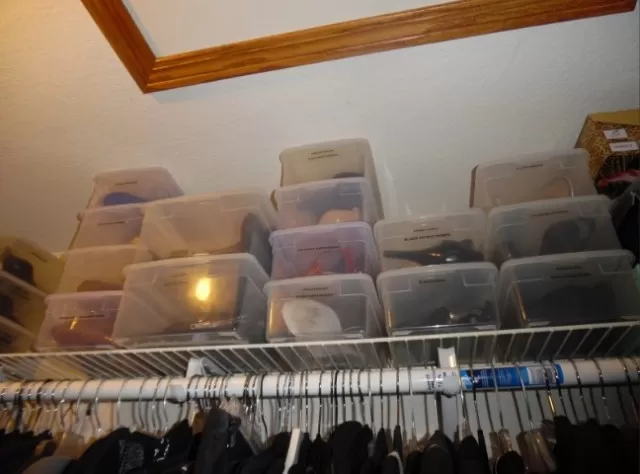Simple laundry room organization tips. Indeed, the layout and organization of a laundry room can significantly impact the laundry experience. A well-organized laundry room can turn this chore into a more efficient and even enjoyable task. Whether your laundry room is a small nook or a spacious area, there are solutions to common layout issues that can help streamline the space.
From finding the right spot to hang delicate items to creating a designated folding area, these organizational ideas can transform your laundry room into a functional and well-structured part of your home. With some simple adjustments, you can make your laundry room a more user-friendly and organized space, ensuring that laundry day becomes a more manageable task.
Designating a Space for Lightly Worn Clothing

If you prefer to wear Your Clothes multiple times before washing them, it’s essential to establish a specific space for these items to prevent them from getting mixed up with dirty laundry.
Jean Prominski recommends creating a designated storage area for your lightly worn clothes to keep them organized and separate. Whether it’s a basket, shelf, or chair, make sure it doesn’t get too full.
Prominski advises clearing it out at least once a week, washing the clothes, and returning them to your clean rotation. This practice helps maintain a well-organized and efficient laundry routine, preventing confusion between lightly worn and dirty clothes.
Establishing a Laundry Schedule for Efficiency
To maximize efficiency in your laundry room, it’s essential to create a structured schedule for using your washer and dryer.
Jean Prominski suggests that having a schedule can help distribute the laundry workload throughout the week, preventing the need to tackle it all on the weekends. The specific scheduling approach may vary based on the number of people in your household and the quantity of laundry loads required each week.
Prominski advises considering a system where each household member has their designated laundry day.
This distribution can be communicated effectively by hanging a schedule in the laundry room, using a calendar or whiteboard, ensuring that everyone knows when it’s their turn to do laundry. Establishing a laundry schedule promotes a more organized and efficient laundry routine for the entire household.
The Initial Step: Clear Out the Space

When embarking on an organization project, begin by completely emptying the designated space.
This includes removing all items, such as linens, baskets, and detergent, before selectively reintroducing what you truly need. Scott O’Hara, VP of operations for ShelfGenie, emphasizes that this practice is instrumental in evaluating the presence of duplicates, finding opportunities to combine similar items, and making decisions about discarding items that are no longer in use.
By starting with a clean slate, you can efficiently reorganize the space with your preferred supplies and optimize its functionality.
Enhance Storage with Floating Shelves
For an efficient storage solution, contemplate the installation of floating shelves on the walls of your laundry room.
According to Scott O’Hara, this approach offers the convenience of keeping supplies such as detergents out of the reach of children while ensuring they remain at eye level for easy access. Additionally, you can further optimize the organization by placing detergents and fabric softeners in clear glass jars or vases. This transparent storage method makes it easy to identify and access the items you need, contributing to an organized and functional laundry space.
Establishing a Space for Lightly Worn Clothing

For those who prefer to wear their clothes multiple times before laundering, it’s crucial to create a designated area to store these items separately from dirty laundry.
Jean Prominski suggests setting up a specific storage space to keep lightly worn clothes well-organized and distinct. Whether you choose to use a basket, shelf, or chair, it’s essential to ensure that this storage location doesn’t become too cluttered.
Prominski recommends clearing out this space at least once a week, laundering the lightly worn clothes, and returning them to your clean clothing rotation. By following this practice, you can maintain an efficient and organized laundry routine while avoiding the mixing of lightly worn and dirty garments.
*The information is for reference only.